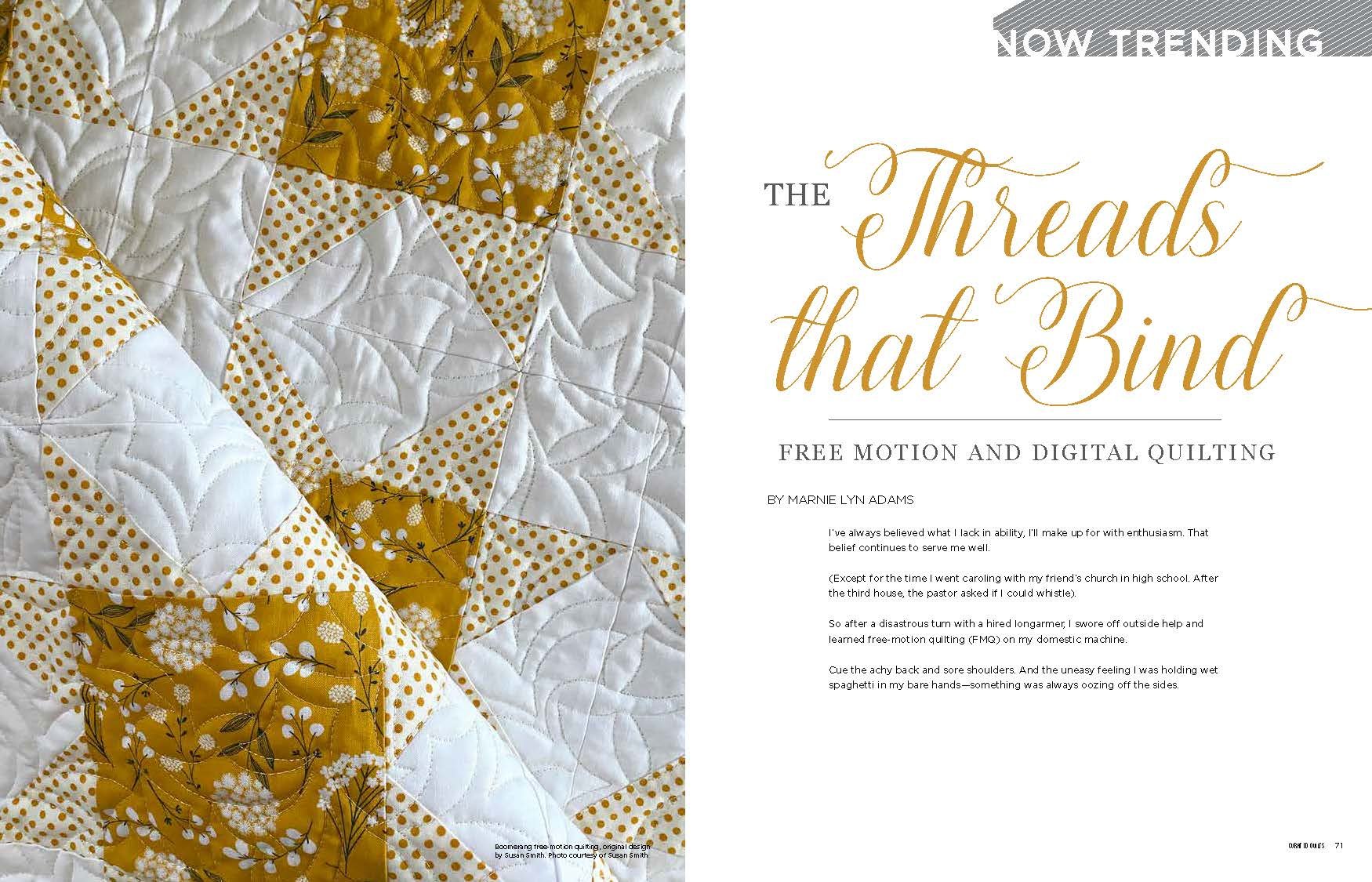Bethanne Nemesh
@bethanne.whitearbor
whitearborquilting.com
Bethanne's digital/paper edge-to-edge pantographs are available:
Why do you prefer FMQ over digital or computerized quilting?
I prefer FMQ over digital for several reasons. First, it is akin to drawing, something I both enjoy and have an aptitude for. As a quilting method it is incredibly flexible and only limited by my imagination. Part of what I love about quilting in general is its connection to the human hand, and the spirit in which we make quilts for love and for comfort. To me, the small inconsistencies are evidence of our humanity and helps maintain that connection. Beyond that, computerized quilting is its own skill that requires time, dedication, and a significant investment of money to master. Understudying the programing aspect is a big part of it, learning to scale properly (it looks awful to just go around shrinking designs and expanding them. Good computerized quilters also have to learn to clip, and re create their designs. I inherently don’t get along well with the technology in my life and find all those aspects of computerized quilting akin to going to a dentist for a root canal.
What should clients or fellow quilters consider when deciding what technique to choose?
If they are choosing for themselves, I always recommend a person learns to freehand first, then add robotics. Freehanding even computerized folks still need many FMQ skills, like ruler work stitch in the ditch and a deep understanding of quilt management. As a teacher, I find FMQ folks who add robotics do very well. But when folks go the other direction they struggle, as they have a really hard time giving up the perfection of robotics. If you are asking if someone should HIRE a FMQ vs Robotics person to quilt their quilt for them, I think it depends on the project. For pantograph work, there is no difference. For custom work, examining their portfolio is important. See how each person improvises into spaces, makes design decisions, and generally chooses composition. Those are always important, but sometimes with robotics and a less experienced operator, the stretching and distortion of a pre-programed design can be strange.
If a quilter wanted to begin quilting today (not piecing), what is the number one thing they should know?
That it is a journey and not a destination. And the only way to move down that journey is to practice it. The only person you are trying to improve on is yourself and it is very important not to try to get into a comparison spiral with, say, world class show quilts at a show. Those quilters have been practicing for 30 years in some cases. Two people can say, buy a longarm machine and start on the same day. If one is afraid and never really practices, they will still quilt like a very new beginner in a year. If the other person dedicates10 hours a week all year to it, they will have enough skills to go into business for themselves and look very professional. You will only benefit from your own efforts.
Is there anything else you wish to share or that I should include in the article?
Yes....any level of quilter….is already more skilled at the art of quilting than 95% of the entire global population. So be kind to yourself. Its an art form actually done by very few people, for all we don’t see that when we are with our peers. The average person on the street will be wildly impressed at what we might consider basic or beginner work. The average person is too afraid to even sew a button, so no matter what you do, you are already a “globally elite quilter”!


